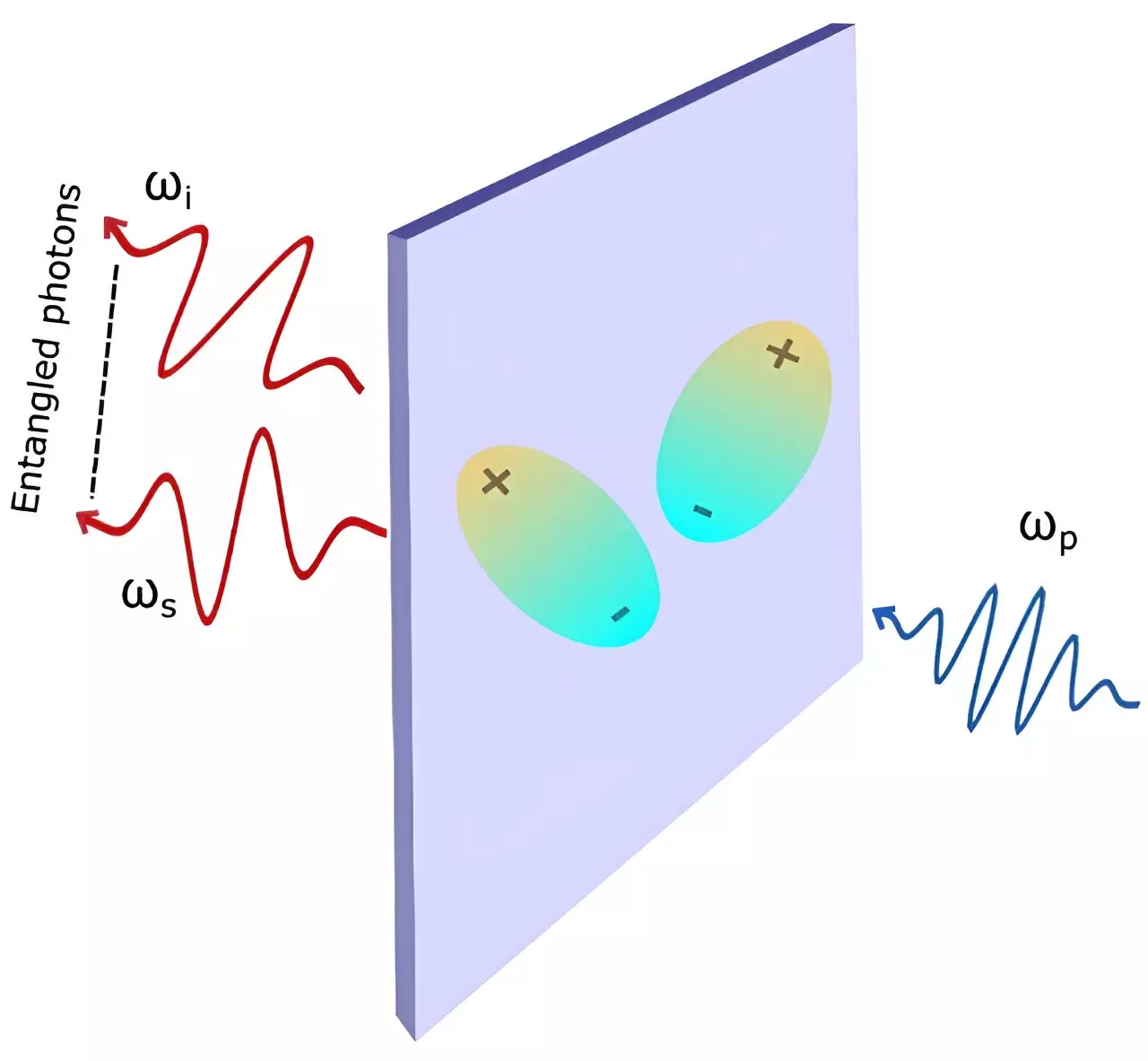Quantum entanglement serves as a fundamental pillar in the realm of quantum technologies, holding significant implications for various fields, including quantum computing, cryptography, and communication. At its core, entanglement describes a unique condition where two or more quantum particles maintain a connection regardless of the distance that separates them. This deeply interconnected nature allows for instantaneous information transfer, making entangled photons—massless particles of light—a crucial resource for advanced technologies. However, generating these photons efficiently has posed significant challenges, particularly when relying on current methodologies.
Advancements in Photon Pair Generation
Recent research from the National University of Singapore (NUS) sheds light on groundbreaking methods that enhance the efficiency of generating entangled photon pairs. The study, spearheaded by Associate Professor Su Ying Quek, focuses on leveraging excitonic resonances and transitions within non-linear optical crystals—an area that was relatively untouched in previous research. Traditionally, the process referred to as spontaneous parametric down-conversion (SPDC) has been the go-to technique for photon pair generation. Yet, SPDC’s inherently low efficiency often limited its applicability in practical quantum technology scenarios.
By introducing a novel approach that emphasizes the role of excitonic interactions—realized through the interaction of light with the crystal—the NUS team has demonstrated a significant increase in SPDC efficiency. These excitonic interactions emerge from pairs of charges (negative and positive) generated by light, collectively known as excitons. The findings, documented in the esteemed journal Physical Review Letters, highlight how the proximity of these charges enhances the likelihood of transitions essential for SPDC.
The Role of Excitons in Enhancing Efficiency
Through meticulous quantum mechanical calculations, the research team was able to analyze and predict the non-linear optical behavior of various crystal materials under specific light frequencies. Lead author Dr. Fengyuan Xuan explained that the efficiency of SPDC could be substantially improved when the opposite charges involved in excitonic interactions are located closer to each other. A direct comparison of their findings with traditional methods revealed a significant advantage, as the conventional approaches overlooked these critical interactions.
Moreover, the study brings to light an important consideration concerning ultrathin non-linear optical crystals. Traditionally avoided for SPDC due to a perceived decline in efficiency associated with reduced material volume, these crystals are repositioned as promising candidates for generating entangled photons. Prof. Quek pointed out that the enhanced excitonic interactions present in ultrathin materials help mitigate the challenges associated with phase matching—a crucial factor influencing the effectiveness of SPDC.
In their investigation, the researchers utilized NbOI2, a layered non-linear optical material, to explore both SPDC and its counterpart, second harmonic generation (SHG). Their experimental simulations, which examined SHG intensities in relation to the polarization angle of the light, revealed remarkable alignment with established experimental results. This aligned validation underscores the credibility of their findings and demonstrates the robustness of using quantum mechanical models to study optical phenomena.
Interestingly, the study also identified that the enhancement of SPDC can achieve even greater effectiveness when the pump beam’s frequency is synchronized with specific excitation frequencies of the crystal. Such conditions not only optimize photon generation but also enable the creation of entangled photons with desirable frequency characteristics.
The research findings present profound implications for the future landscape of quantum technology. As entangled photon production becomes more efficient and reliable through the use of ultrathin materials, crucial barriers to integrating these photons into hybrid quantum-photonic platforms may be dismantled. Consequently, the enhancement of SPDC efficiency sets the stage for more advanced quantum devices, which can leverage the unique properties of entangled photons for applications in communication, information processing, and more.
In summation, the work of the NUS team signifies a transformative step toward overcoming long-standing challenges in the realm of quantum optics. By embracing the interplay between excitons and SPDC in ultrathin materials, the future might hold a promise of richer and more accessible quantum technologies that will redefine our approach to information exchange and secure communication.


Leave a Reply